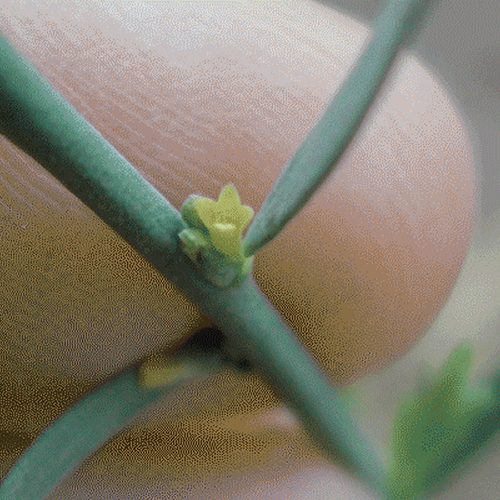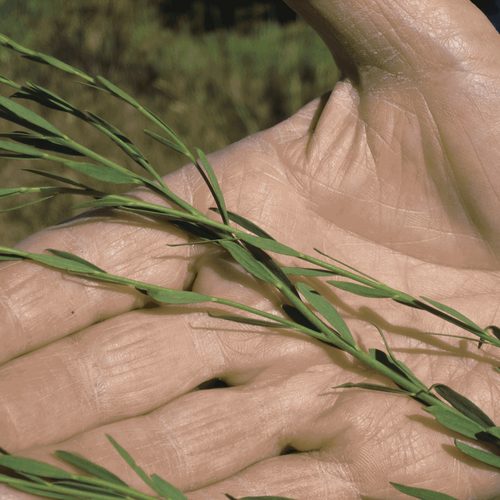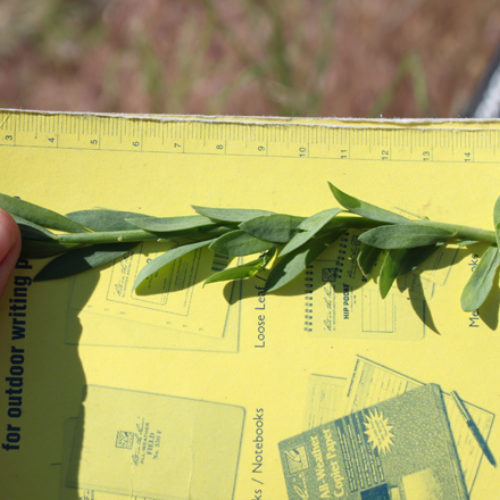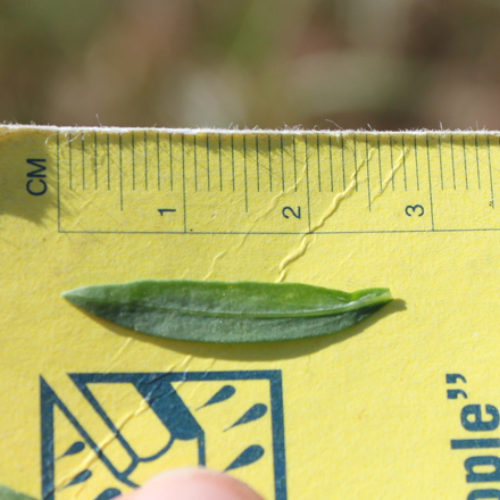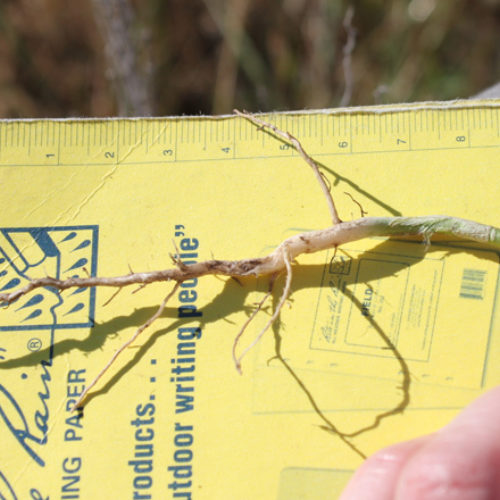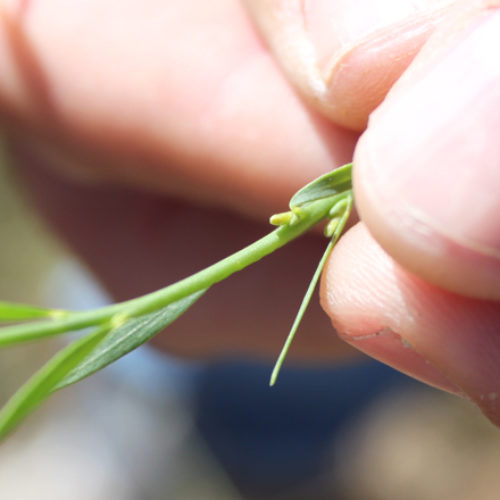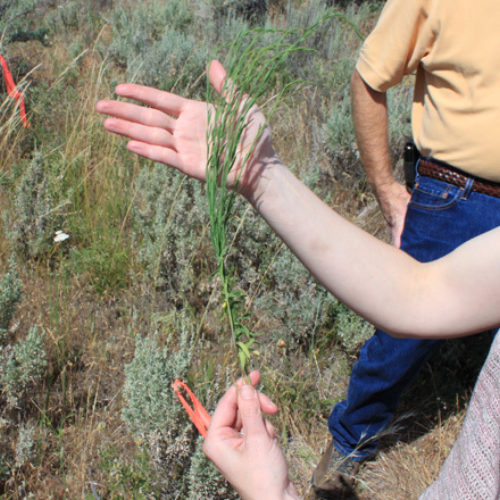Spurge Flax
Thymelaea passerina
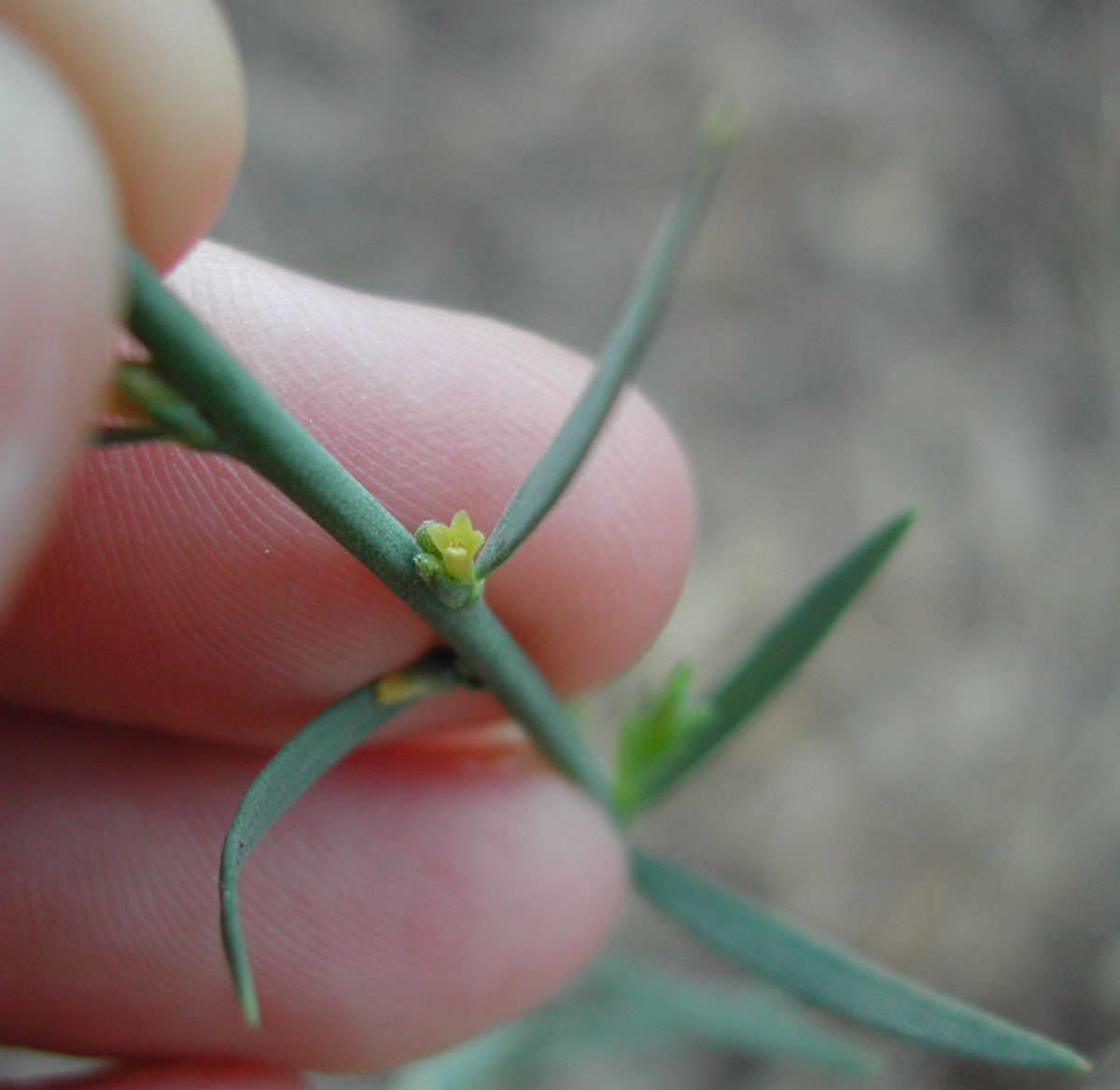
Family: Thymelaeaceae
Other Common Names: mezereon
Weed class: B
Year Listed: 1999
Native to: Europe, Asia and Northern Africa
Is this Weed Toxic?:
not known to be
Legal listings:
Changed from a Class A to a Class B noxious weed in 2018. This plant is also on the Washington State quarantine list. It is prohibited to transport, buy, sell, offer for sale, or distribute plants or plant parts of quarantined species into or within the state of Washington or to sell, offer for sale, or distribute seed packets of seed, flower seed blends, or wildflower mixes of quarantined species into or within the state of Washington. Please see WAC 16-752 for more information on the quarantine list. For questions about the quarantine list, contact the Washington State Department of Agriculture's Plant Services Program at (360) 902-1874 or email PlantServices@agr.wa.gov.
Why Is It a Noxious Weed?
Spurge flax is known as a common weed in its native habitat. In Okanogan County, where it was discovered in Washington State, it infested 600 acres before it was noticed and identified. Spurge flax is aggressive and is not palatable to livestock.
How would I identify it?
General Description
Spurge flax is an herbaceous annual with a fibrous taproot. The plant ranges from 2.5 to 24 inches tall. It is slender, wiry and upright. It grows as one main stem, then commonly branches in the upper part of the plant. The plant turns red in the fall.
Flower Description
Flowers are greenish, tubular and 2-3 mm long. They have 4 sepals, no petals and 8 stamens. Stamens appear in two whorls of four. Below each flower, two very small bracts arise from a tuft of tiny white hairs.
Leaf description
The leaves are alternate and leathery. They are small and narrow with a linear tapered point.
Stem description
The stems are slender, wiry and upright with one main stem. Commonly there is branching in the upper part of the stem.
Fruit Seed Description
The fruit is a shiny, black achene. The round seeds are brown to black, 2-3 mm long.
May Be Confused With
Spurge flax is very difficult to identify, it closely resembles some knotweed (Polygonum) species. If you need help with identification, contact your county noxious weed coordinator.
Where does it grow?
It grows in rangeland areas, disturbed sites and dry pastures. Please click here to see a county level distribution map of spurge flax in Washington.
How Does it Reproduce?
Spurge flax reproduces by seed.
How Do I Control It?
Herbicide Control
Spurge flax is difficult to control due to the lack of surface area of the small, leathery leaves. Herbicide information is currently not included in the PNW Weed Management Handbook for spurge flax but check back as this resource is continually being updated. See the additional links below for information or contact your county noxious weed coordinator.
For More Information
See our postcard for early detection information about spurge flax.
See our Written Findings for more information about spurge flax (Thymelaea passerina).
See the USDA-APHIS Weed Risk Assessment for Thymelaea passerina--spurge flax
Invasive.org information on spurge flax.



